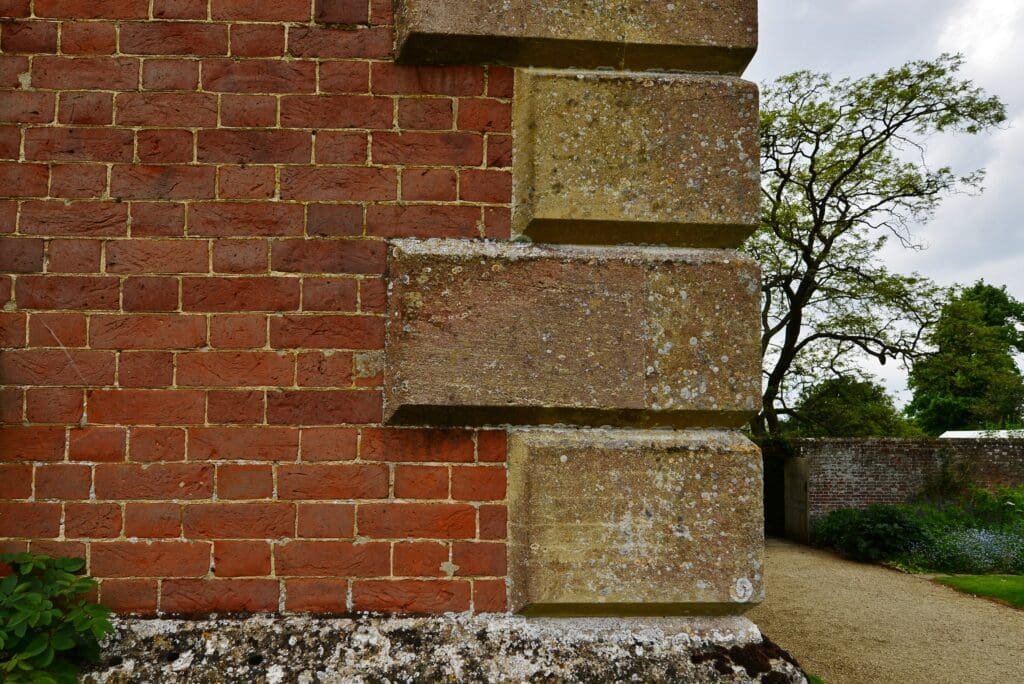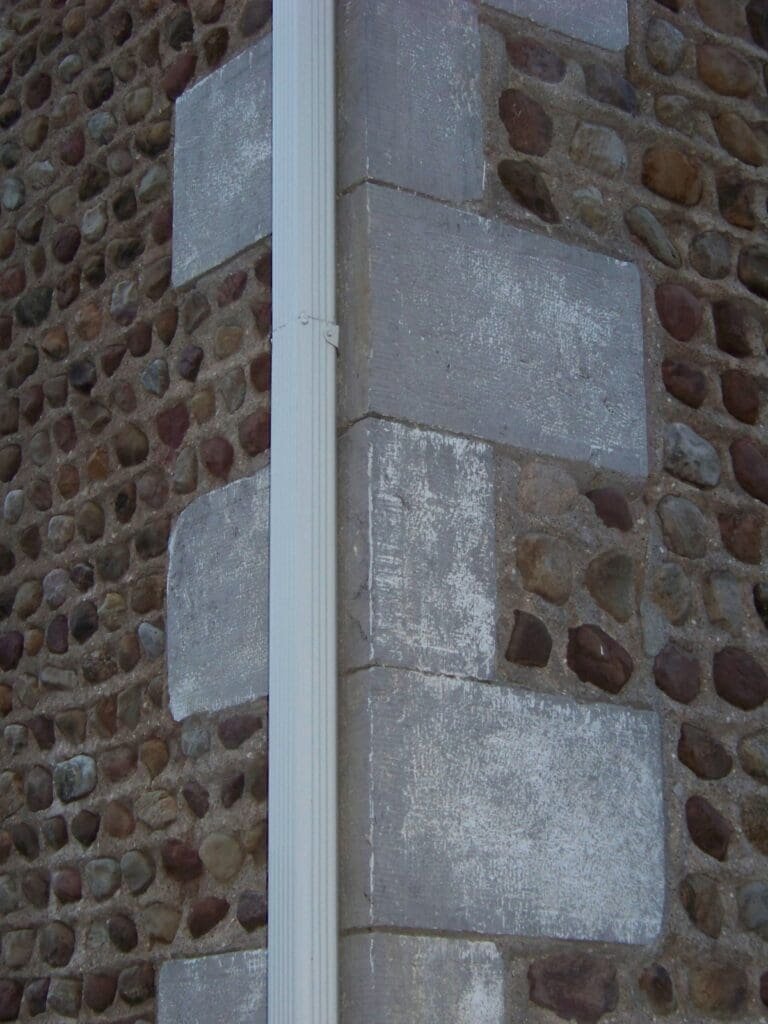Introduction To Quoin Stones
Ever noticed the contrasting stones at the corners of historical buildings and wondered what they are?
They’re known as quoin stones, a key decorative and structural element in architecture which has remained significant across centuries.
In this article, we will explore the definition of quoin stones, their key characteristics, and the vital roles they play in adding strength, stability, and aesthetic appeal to architectural designs. We will compare their features against other structural elements, explore various styles and material choices, and explain different installation techniques.
So, are you ready to discover the surprising importance of these impressive corner stones? Let’s begin.
Table of Contents
Quoin Stone: Definition and Importance in Construction

What is a Quoin Stone?
A quoin stone is a structural and decorative element used at the corner of a building. These stones are typically larger and of a contrasting color or texture than the surrounding materials to emphasize the corners and provide stability.
Key Characteristics of Quoin Stones
- Function: Provides structural strength and visual stability.
- Placement: Located at the exterior corners of buildings.
- Material: Often made from stone, brick, or concrete.
- Design: Frequently features contrasting colors or textures compared to adjacent walls.
The Role of Quoin Stones in Architecture
Structural Integrity
Quoin stones are vital for reinforcing the corners of buildings, ensuring that the structure remains stable, especially in older masonry constructions.
Aesthetic Appeal
Quoin stones add a unique visual element to the architecture, providing a finished and sophisticated look. Their contrasting nature makes the building stand out.
Historical Significance
Traditionally, quoin stones were used in classical and colonial architecture, symbolizing strength and permanence. Many historical buildings feature prominent use of these stones.
Examples of Quoin Stone Use
Some historic buildings and modern constructions incorporate quoin stones to achieve various visual and functional objectives. For more detailed information, you can refer to this Britannica article on quoin stones.
Residential Buildings
- Victorian homes often use quoin stones for decorative purposes.
- Colonial houses feature these stones to emphasize corners.
Public and Commercial Buildings
- Many city halls and courthouses use quoin stones to denote prominence.
- Modern office buildings incorporate quoin stones for a classic aesthetic.
Comparison: Quoin Stones vs. Other Structural Elements
| Feature | Quoin Stones | Corner Beads |
|---|---|---|
| Material | Stone, brick, or concrete | Metal or plastic |
| Purpose | Structural and decorative | Reinforcement of interior plaster corners |
| Visibility | Highly visible and aesthetic | Usually hidden under plaster |
Quoin stones not only serve architectural and aesthetic purposes but also contribute significantly to the structural integrity of buildings. With their strategic placement and distinctive design, they highlight the craftsmanship and architectural style of the construction.
Different Styles of Quoin Stones

Alternating Quoin Stones
Alternating quoin stones are arranged in a pattern that alternates between a longer and a shorter side. This design creates a unique, visually appealing effect that draws the eye to the corners of a building.
Uniform Quoin Stones
Uniform quoin stones are usually rectangular in shape but have a consistent, identical size and arrangement. This style offers a clean and orderly appearance that can add a sense of symmetry and cohesion to a building.
Rustic Quoin Stones
Rustic quoin stones are often rougher and less uniformly shaped, giving a building a historic, rugged appearance. This style is particularly popular in traditional or heritage buildings to enhance their old-world charm.
Material Choices in Quoin Stones
Natural Stone Quoin Stones
Quoin stones are often crafted from natural stone materials like sandstone, limestone, or granite. These materials offer a robust, durable solution with excellent weather resistance, but their weight may necessitate extra structural support.
Concrete Quoin Stones
Concrete is a popular choice for quoin stones due to its practicality and versatility. Concrete quoin stones can be easily molded into varying shapes and sizes, and they can be dyed to achieve different color effects too.
Brick Quoin Stones
Brick quoin stones contribute to a building’s visual appeal by contrasting with the color and texture of the adjacent wall materials. Bricks can provide a warm and inviting aesthetic, especially when paired with a concrete or stucco façade.
Installation Techniques of Quoin Stones
Full-Depth Quoin Stones
In this method, the quoin stones have the same thickness as the surrounding masonry. Full-depth quoins are typically observed in older, traditionally built structures.
Cut-In Quoin Stones
Cut-in quoin stones are added after the masonry has been laid, then cut into the existing brickwork. This method is a popular choice for modern constructions and renovations, as it’s less labor-intensive to install.
For more detailed information on different types of quoin stones and their uses in architecture, consider checking this Architectural Digest article on quoin stones.
What is a Quoin Header in Stone Masonry?
A quoin header in stone masonry refers to a type of quoin stone that extends from one side of the corner to overlap a portion of the adjoining wall. This design is not just decorative but serves an important structural function by locking the corner stones together, contributing to the overall stability and robustness of the building.
Key Characteristics of Quoin Headers
- Function: Enhance structural stability at the corners by overlapping adjoining walls.
- Placement: Positioned to cross from one wall’s corner into the adjacent wall, effectively integrating the two sides.
- Material: Typically made of durable materials like stone, brick, or concrete.
- Design: Often designed to match or contrast with adjoining quoin stones for both stability and aesthetic appeal.
Advantages of Using Quoin Headers
Enhanced Corner Stability
By overlapping the adjoining walls, quoin headers significantly enhance the corner’s structural integrity. This is particularly important in older buildings or constructions exposed to environmental stressors like wind or seismic activity.
Aesthetic Coherence
Quoin headers contribute to the aesthetic appeal by providing a seamless transition between the corners and the adjacent walls. Their thoughtful placement enhances the building’s visual cohesion.
Longevity and Durability
The additional stability provided by quoin headers also translates to enhanced durability. Buildings with well-integrated quoin headers are more likely to withstand the test of time and retain their architectural integrity.
Types of Quoin Headers
Full-Block Headers
These headers span the entire depth of the wall and provide maximum stability, commonly used in larger constructions or buildings requiring extra reinforcement.
Half-Block Headers
These headers cover half the depth of the wall and are often used in smaller structures or in combination with other reinforcing elements. While less robust than full-block headers, they still offer considerable structural benefits.
Custom-Designed Headers
For specialized architectural requirements, quoin headers can be custom-designed to meet specific aesthetic or structural needs. This is particularly common in restoration projects or bespoke architectural designs.
Conclusion: Unearthing the Strength and Beauty of Quoin Stones

In recapitulation, quoin stones undeniably play an intrinsic role both in the integrity of structural design and enhancement of the aesthetics in construction. Their dynamic use throughout architectural history, from vintage styles to modern trends, highlights their enduring relevance and versatility. These cornerstones don’t merely bolster the stability of buildings; they also impart a distinctive visual charm.
The various types of quoin stones, be it alternating, uniform, or rustic, each speak a unique architectural language, lending an individual character to the edifice. Varieties in materials including natural stone, concrete, and brick offer a vast palette for architects to choose from. Ultimately, the selection and installation method of quoin stones greatly influence the visual narrative that a building conveys.
Frequently Asked Questions – FAQs
What is a quoin stone?
A quoin stone is both a structural and decorative element that is used at the corners of a building. They are usually bigger and contrast the color or texture of the surrounding materials to accentuate the corners and provide added stability.
Are quoin stones only used in old buildings?
No, while quoin stones are commonly seen in classical and colonial architecture, they are also utilized in many modern constructions, both residential and commercial, for their aesthetic and structural benefits.
What materials are typically used to make quoin stones?
Quoin stones are often crafted from materials like stone, brick, or concrete. The chosen material highly depends on the architectural style, desired aesthetics, and required structural support of the building.
What is a quoin header?
A quoin header in stone masonry is a type of quoin stone that overlaps a part of the adjoining wall. This design is not just decorative but also plays a significant part in structurally locking the corner stones together.






